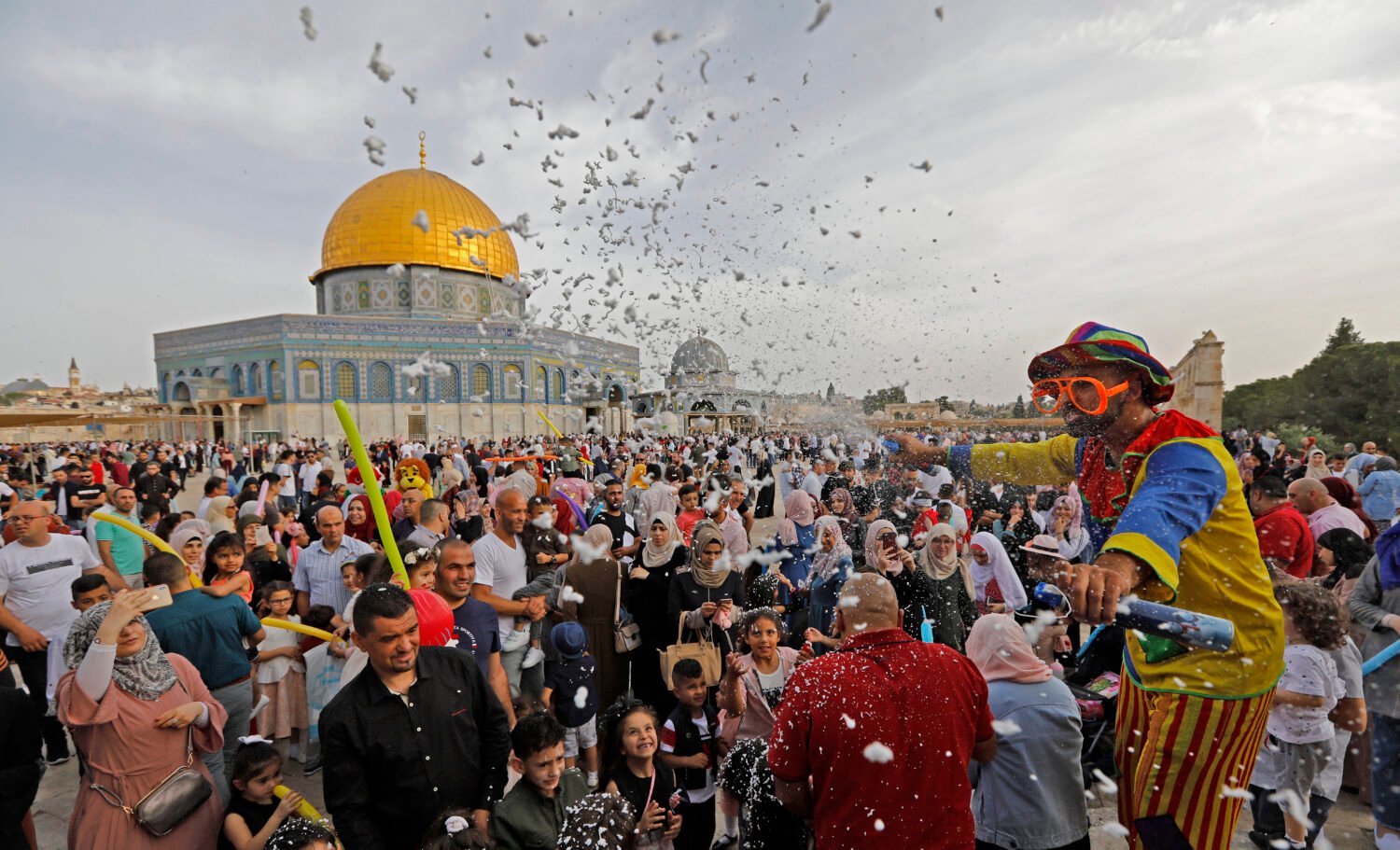Eid al-Fitr, marking the conclusion of Ramadan, holds profound cultural significance across the Middle East, where diverse traditions and customs enrich this cherished Muslim holiday.

Kawthar Metwalli
Eid al-Fitr, which translates to the Festival of Breaking Fast, holds significance in the Middle East, transcending its religious connotations and shining as a beacon of tradition and cultural richness. This cherished Muslim holiday signifies the conclusion of the sacred month of Ramadan and heralds the beginning of Shawwal, the tenth month of the Islamic calendar.
Similar to the timing of Ramadan, Eid al-Fitr varies each year due to differences between the Lunar Islamic calendar, the solar Gregorian calendar and other regional calendars like the Shamsi or Jalali calendar. While the Gregorian calendar is widely used for administrative purposes, the Islamic calendar dictates the start and end of Islamic months, such as Ramadan and Shawwal, marked by the sighting of the crescent moon.
In addition to the Gregorian calendar, the Middle East – particularly in Iran and Afghanistan – also employs another solar calendar: the Shamsi or Jalali Calendar. This solar calendar, dating back to the Sassanian Empire, aligns more closely with solar cycles and is used alongside the Islamic calendar for various purposes.
In contrast to the Gregorian calendar, the Jalali calendar relies on observation rather than rules. Each year, it starts with the vernal equinox, determined precisely through astronomical observations conducted in Tehran. Although the Jalali calendar is the official system used in Iran and Afghanistan, the end of Ramadan and, consequently, the celebration of Eid are still determined in alignment with the Islamic calendar.
The Islamic calendar, also known as the Hijri calendar, was introduced by Khalifa Umar ibn al-Khattab in response to the need for a more consistent way to calculate days. It follows a lunar cycle, each month beginning with the sighting of the crescent moon.
A key difference between the lunar Islamic calendar and the two calendars mentioned above is the fact that the Hijri year consists of 345 or 355 days. The discrepancy between lunar and solar calendars results in variations in the timing of Eid al-Fitr each year. Consequently, Eid al-Fitr is celebrated on different dates each year, determined by the sighting of the crescent moon.
Moon sighting holds profound cultural significance in determining the celebration of Eid al-Fitr. In Saudi Arabia, an official committee observes the crescent moon to announce the official end of Ramadan. This announcement marks the start of Eid celebrations across the region, beginning with the Takbirat and followed by Eid prayers the next morning.

Eid al-Fitr is honoured across the Muslim community in the Middle East through a rich tapestry of customs intricately intertwined with tradition and history. Despite their diversity, they share the annual anticipation for the new crescent moon sighting.
For instance, in countries like Saudi Arabia and Egypt, it is common to give children presents or money, which is known as Eiddeyah. In addition to family gatherings and enjoying Kahk, a highlight and clear signifier of Eid festivities in Egypt is the airing of classic Egyptian plays such as El Eyal Kebret (No Longer Kids), Sok Ala Banatak (Lock Your Girls In) and Hello Shalaby.
In Turkey, Eid al-Fitr, known as Seker Bayrami or the Sugar Festival, is a three-day celebration filled with indulgence in sweets and Turkish delights for both children and adults. Equally, it is paramount in Turkish Eid customs to honour family and elders, with visits to elderly relatives to seek blessings and express gratitude through the tradition of hand-kissing Bayram greetings.
Moroccan festivities take on a culinary focus, as families come together to savour a variety of vibrant dishes, including Mechoui, couscous and Sellou. Meanwhile, in the UAE, a longstanding tradition involves decorating streets, homes and public spaces with elaborate rugs, colourful flags and banners. Another cherished custom is the application of intricate henna designs to adorn the hands of women and girls during the festivities.
In essence, Eid al-Fitr serves as a unifying force, weaving together diverse traditions and customs across borders. From the anticipation of the crescent moon to the lively celebrations across the Middle East, this festival embodies the Muslim world’s cultural richness, diversity and unity, strengthening community bonds and shared faith.


